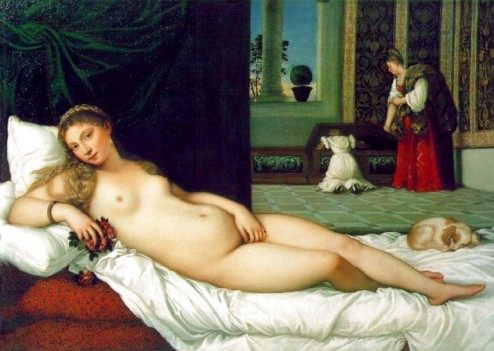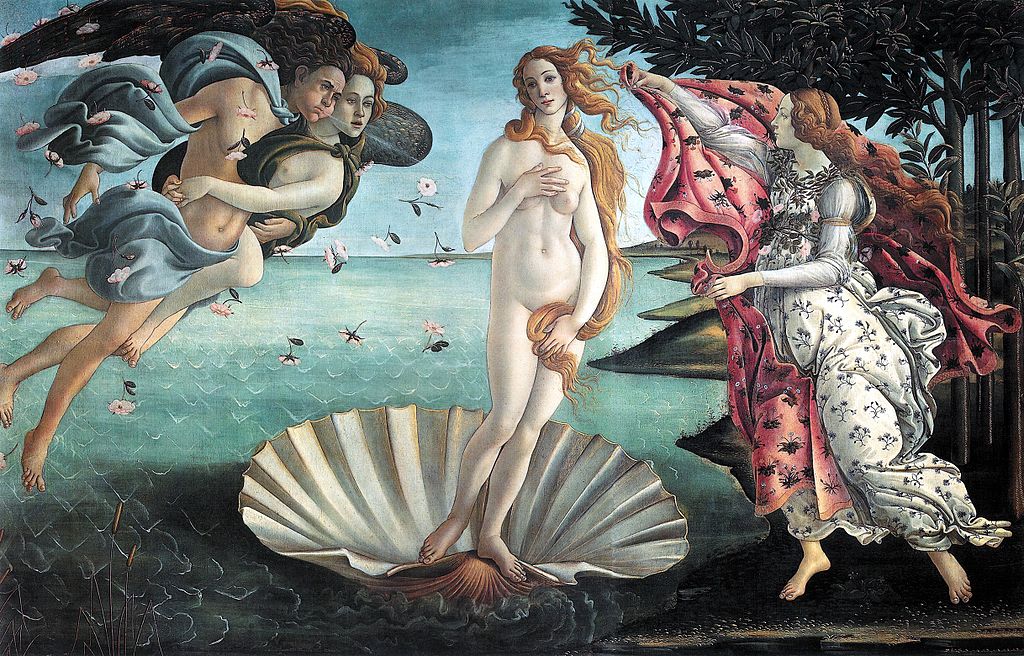Believe it or not, there are different kinds of Venuses. Figures from ancient mythology often have different aspects or characteristics that artists emphasize in art. The Roman goddess Venus, who is also known as Aphrodite in Greek Mythology, represents different kinds of love and we can see these different Venuses in art.
Botticelli’s Venus (above) is a little lady. She represents pure love. In this elegant painting executed in a linear style, the artist presents a modest Venus who covers her naughty bits with her hand and her golden hair. The patron who commissioned the work was Lorenzo de’ Medici, who had a special interest in ancient art and literature. Very possibly, Homer’s Hymn to Aphrodite inspired the curious symbolism, in which case the painting is an allegory for the pure human soul that is uncorrupted at birth.
Titian’s Venus (below) is something altogether different; she is the Venus of erotic love. The artist painted this for the lustful gaze of Guidobaldo II, Duke of Urbino, and it could be a portrait of his favorite courtesan. Titian displayed her nude form across the picture plane for the enjoyment of the viewer. She gives him a knowing look. Titian strategically arranged the composition so that the horizontal line of her figure and the vertical line of the drapery behind her intersect right at her genital area, which she casually and teasingly covers with her relaxed hand.

Titian, Venus of Urbino, c. 1538, oil on canvas, 47″ x 65″, Galleria degli Uffizi, Florence, Public Domain
 Titian, Venus of Urbino, c. 1538, oil on canvas, 47″ x 65″, Galleria degli Uffizi, Florence, Public Domain
Titian, Venus of Urbino, c. 1538, oil on canvas, 47″ x 65″, Galleria degli Uffizi, Florence, Public Domain

